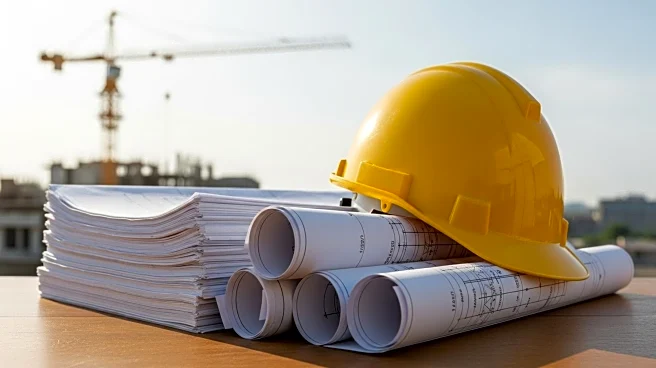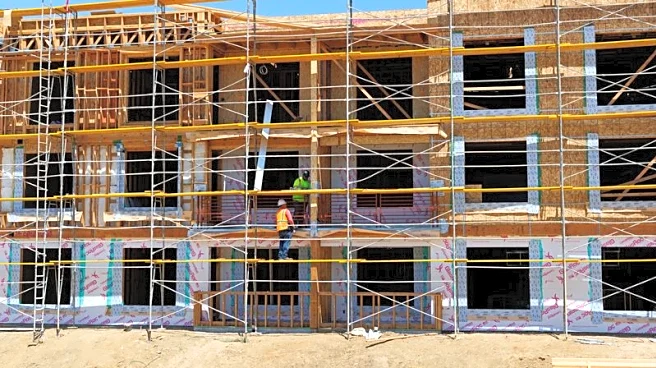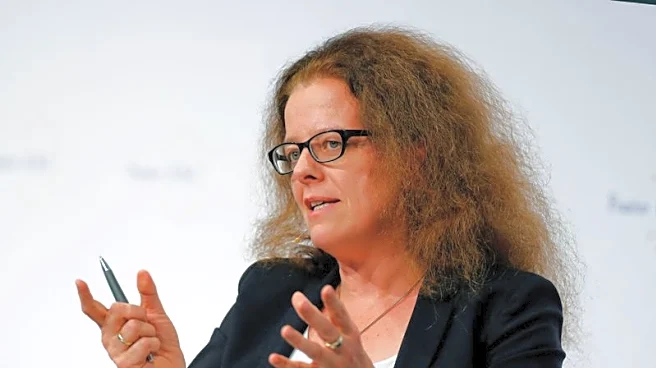What's Happening?
U.S. construction spending experienced a decline in July, as reported by the Commerce Department's Census Bureau. The spending fell by 0.1% following a 0.4% drop in June, aligning with economists' expectations. On a year-over-year basis, spending decreased by 2.8%. The decline is attributed to high mortgage rates, which have constrained the housing market. Private construction projects saw a 0.2% decrease, while residential construction investment slightly increased by 0.1%. The inventory of completed new homes for sale reached its highest level in 16 years. Additionally, investment in private nonresidential structures, such as offices and factories, decreased by 0.5%. Public construction spending, however, rose by 0.3%, with federal government projects increasing by 3.2%.
Why It's Important?
The decline in construction spending highlights ongoing challenges in the housing market, primarily driven by high mortgage rates. This situation affects various stakeholders, including homebuyers, construction companies, and investors in real estate. The elevated mortgage rates, despite expectations of Federal Reserve interest rate cuts, continue to impact affordability and sales. The slowing labor market further constrains home sales, potentially leading to reduced economic activity in the construction sector. The increase in public construction spending may provide some relief, but the overall trend suggests a cautious outlook for the industry.
What's Next?
The construction sector may face continued challenges if mortgage rates remain high, potentially leading to further declines in residential investment. Stakeholders, including policymakers and industry leaders, may need to address these issues to stimulate growth. The Federal Reserve's decisions on interest rates will be closely watched, as they could influence mortgage rates and, consequently, the housing market. Additionally, the potential for increased public construction spending could offer opportunities for growth in specific areas.













